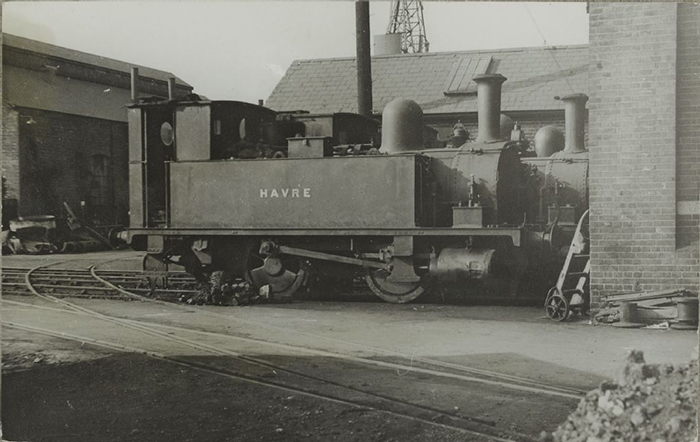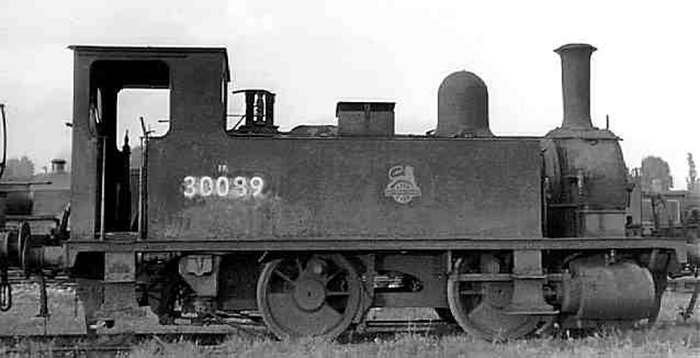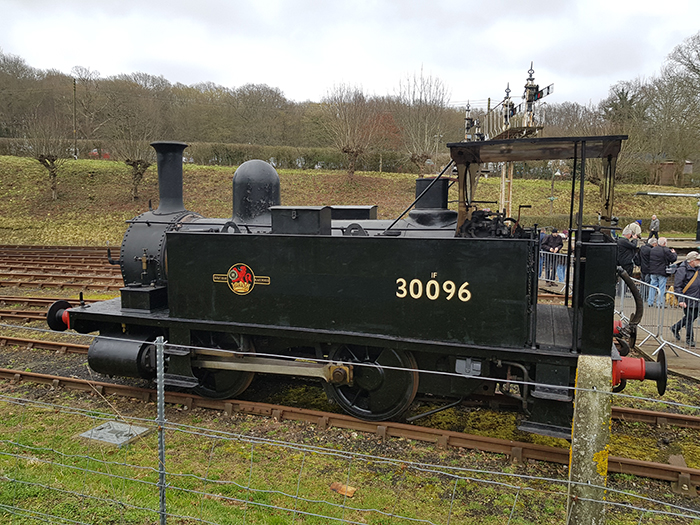

 STUART JORDAN looks back at the life of this well-used shunter.
STUART JORDAN looks back at the life of this well-used shunter.
The area covered by the London and South Western Railway (1838 – 1922) stretched from London to Portsmouth, Southampton, and Bournemouth, and on to Devon and Cornwall serving destinations such as Exeter, Plymouth, Ilfracombe, Padstow, and Bude. There was a requirement for a new class of locomotive that could handle the sharp curves found at dockyards, as well as general shunting work at major stations. The Locomotive Superintendent of the LSWR, William Adams, designed a new 0-4-0 tank locomotive for this task. This William Adams, inventor of the ‘Adams Bogie’, should not be confused with William Bridges Adams, who invented the ‘Adams Axle’. If the fact that two men with the same name invented similar things isn’t confusing enough, the LSWR 415 Class which is known as the Adams Radial is named after the Superintendent Adams that designed it, rather than Bridges Adams whose axle technology is also incorporated into the design.
Moving swiftly on, though, as I am straying away from the subject of the piece. The first batch of ‘B4’ locomotives, named after the order number for the initial ten, were built at the LSWR Nine Elms Works at Battersea. They were delivered between 1891 and 1892 with the second order of ten (D6) arriving in 1893. A final five (K14), with modifications to the design made by Adams’ successor Dugald Drummond, were delivered in 1907. These modifications included a smaller boiler and a lipped chimney. Some of the class had cut away cabs for improved visibility.

LSWR B4 No.86 Harve.
The first B4 locomotives were allocated to major stations on the LSWR network as well as the loco sheds at Exmouth Junction and Plymouth Friary. The LSWR bought Southampton Docks in 1892 and the existing worn-out motive power was replaced with B4s. Those stationed at Southampton were named after the destinations of ships sailing from the port, e.g. Caen, Cherbourg, and Normandy. The short wheelbase of the B4 made it ideal for the tight curves on the docks. By the turn of the century, the majority of B4s were working at Southampton with the rest at depots around the network. They only remained as station pilot duty at Exeter.
With Grouping in 1923, LSWR became part of Southern Railway (SR), who retained the locomotive at several docks and sheds on their network. This included locations that had not been part of the LSWR network, such as Dover and the Stewarts Lane and Ashford works. By the end of the Second World War the majority of the B4s were back at Southampton. By this time, the oldest in the class were nearly sixty years old. SR’s Chief Engineer, Oliver Bulleid, believed the cost of overhaul for these locomotives to be too great, so decided to replace them with newer engines.

BR-liveried 30089, formally No. 89 Trouville.
The replacements would need the same short wheelbase as the B4 to operate on the docks. There were many locomotives in storage after the war, including redundant S100 Class 0-6-0 tank engines. These locomotives had been brought over by the United States Transportation Corps during the war. Most were transported over to mainland Europe, but some remained in store at Newbury Racecourse. These nearly-new locomotives were suitable for the job, so fourteen were purchased in 1947 at the cost of £2500 each.

No. 96 Normandy in preservation at the Bluebell Railway.
Withdrawals of the B4 began the year after, under British Railways. Many were sold on for industrial use, with the final three taken out of service in 1963. Two of these final three are the only members of the class to survive into preservation. No. 103 Granville was bought by Butlins in 1963 and displayed at the Skegness holiday camp next to 6100 Royal Scot. It was then moved the Bressingham Steam Museum in 1971 where it remains to this day. No.96 Normandy was sold to Corrall Ltd and was used at their Southampton coal depot where it was named Corrall Queen. It was acquired by the Bluebell Railway in 1978 and was used for shunting work, repainted as Normandy. The boiler certificate expired in 2006 and it has been on static display ever since as it awaits an overhaul.
At time of writing, the B4 locomotive is forthcoming in both OO and O Scale from Dapol.